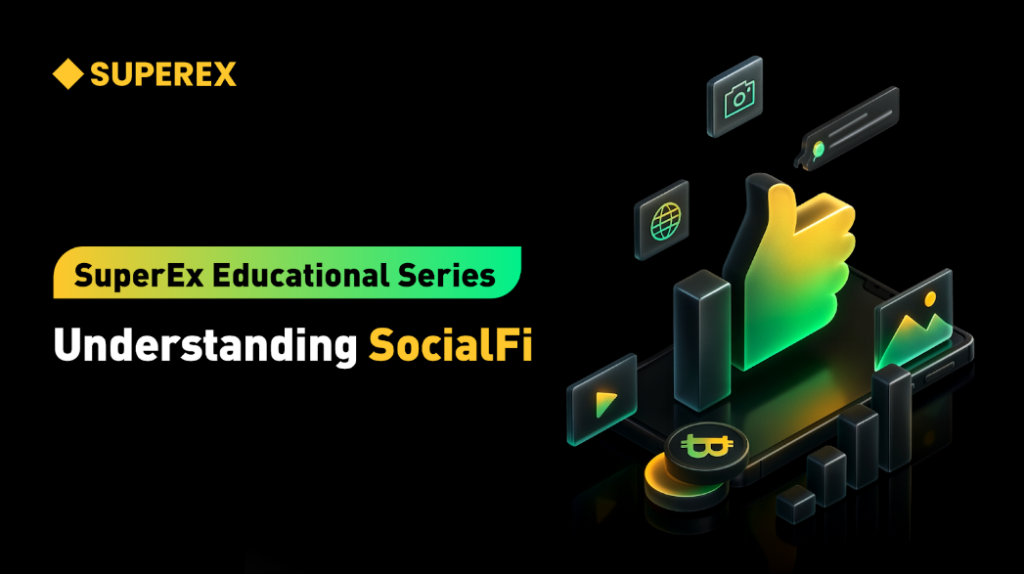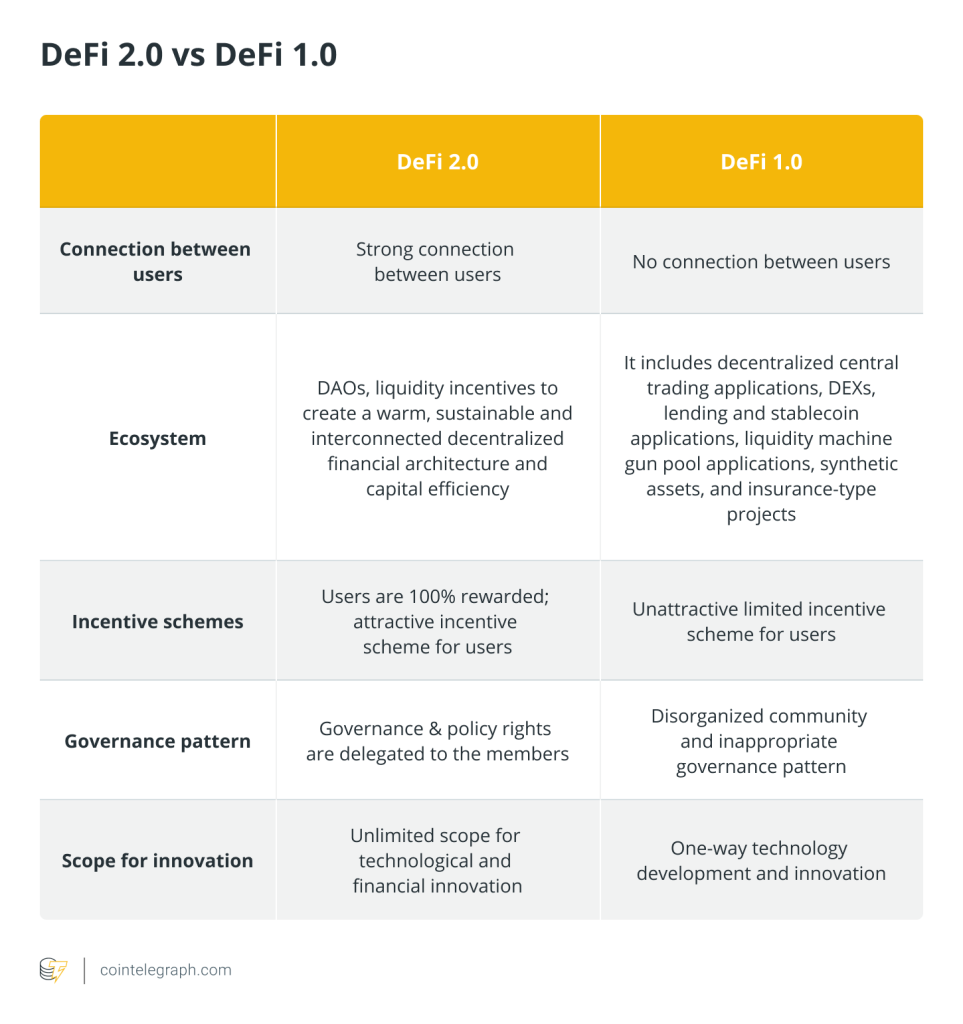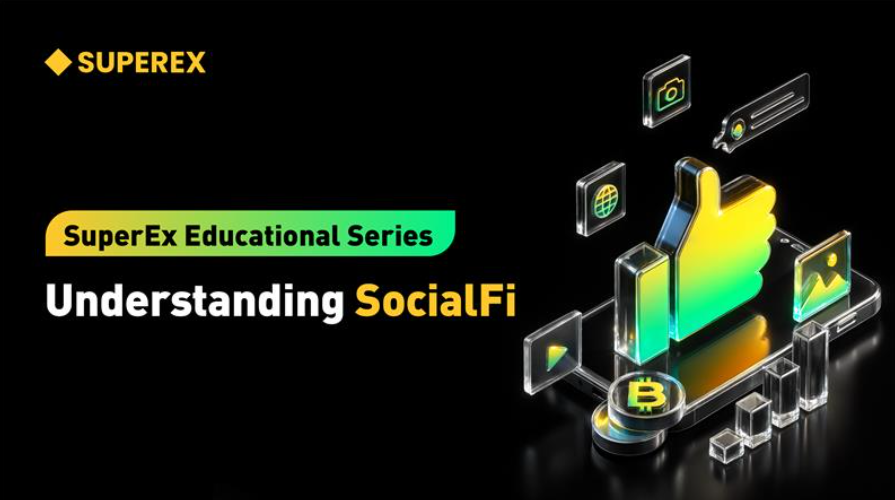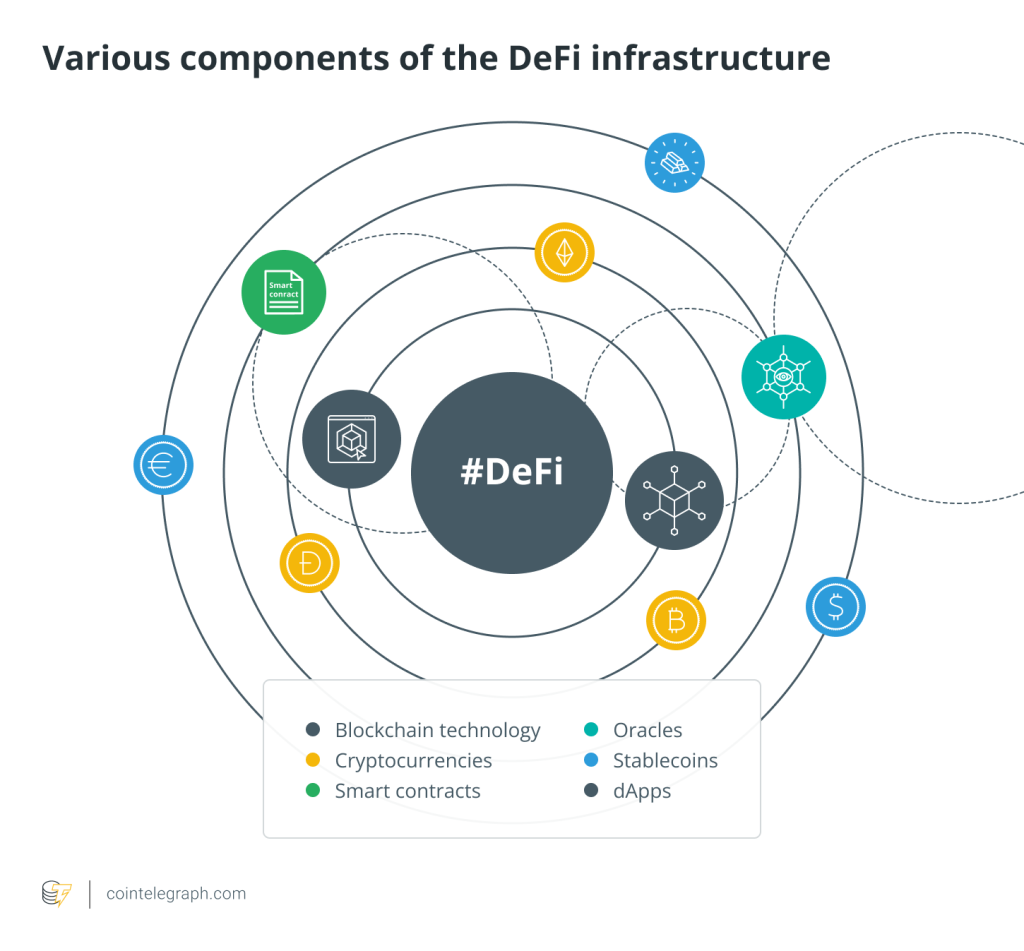What is SocialFi? A beginner’s guide to the social network of the future


What is SocialFi?
SocialFi brings together the principles of social media and decentralized finance (DeFi). SocialFi platforms offer a Web3 (decentralized) approach to creating, managing and owning social media platforms and the content generated by its participants.
At the heart of SocialFi, applications are content creators, influencers and participants who want better control of their data, freedom of speech and the ability to monetize their social media following and engagement. Monetization typically happens in cryptocurrencies, while identity management and digital ownership are driven by nonfungible tokens (NFTs).
These platforms are structured as decentralized autonomous organizations (DAOs) that are better suited to prevent centralized censorship decisions. As blockchain technology has come in leaps and bounds in the last few years, SocialFi infrastructure is able to cope with throughputs required for social media interactions.
Challenges of Web2 social media
Every day, over half the world’s population, 58.4%, spend an average of 2 hours and 27 minutes on social media. Yet, the attention, interactions, engagement and data that gets generated is monetized by a few centralized entities and their shareholders. This misalignment of incentives has led to the oneliner: “If the product is free, you are the product.”
We have also seen ample instances of centralized decision making when platforms ban content creators for talking about certain topics. While these processes are generally there to protect the broader base of users from harmful posts, a decentralized curation process, if any, would be more aligned with Web3 ethos.
The third challenge that Web2 applications have had is digital ownership and the ability to track ownership. This is particularly critical for creators and artists who share their work online. Yet, a lack of digital ownership opens up loopholes for digital piracy if there aren’t enough controls in place.
Another shortcoming of Web2 platforms is the inability to monetize brand equity. In most cases, influencers who have created a brand for themselves are able to monetize their brand equity in indirect ways. Yet, the social following and credibility they have created on a social media platform don’t directly translate to monies in the bank.
Can SocialFi save the day? What is SocialFi and how does it work? Let’s deep dive into these questions in the following sections.
Building blocks of SocialFi
SocialFi is set to disrupt the social media industry by sticking to Web3 ethos, which, in essence, is simply being decentralized social applications. It is focused on solving key design issues around aspects of Web2 social media platforms as we know them today.
Some SocialFi projects worth mentioning are the following:

Let us go through some of the key aspects that SocialFi strives to get right when compared to its Web2 counterpart. That would also help understand why SocialFi is so popular.
Monetization
Managing incentives fairly across all stakeholders has been a key design principle of Web3 applications, which is made possible by the DAO model. SocialFi apps take it one step further by using the concept of social tokens or in-app utility tokens.
In the world of DeFi and even GameFi, we often see utility tokens that are used to drive in-app economics. With SocialFi, we have social tokens that mark the third tier of the economy. These tokens are not just at the application level but can be created at a user level. Creators can now manage their own economies through social tokens.
Every user with meaningful brand equity can have their own token. For instance, Elon Musk can have his own token and a mini economy that functions around it. The value of the token will be directly proportional to the social clout of the user. Therefore, Elon Musk’s token will be valued higher than that of an ordinary user just creating their social media profile.
Let us now look at what would drive the value of the social token in this model. There are a few fundamental design principles underlying this model, such as:
-
Only those who hold a creator’s social token can engage with their posts. Therefore, in our example, if you want to engage with Elon Musk’s posts, you would need to hold his social token in your wallet.
-
If you would like to get the attention of an influencer, your message can be listed at the top of the responses if you hold the highest number of their social token.
-
Creators and influencers can set thresholds that will allow followers with more than a certain number of their social tokens to message them directly.
-
Artists who have a huge following can create a subscription model in their social token for those who would like to have premium access to their creative content.
-
When a user wants to engage with someone’s content, either through a like or a share, it costs them money.
There are economic models being tested around some of the key principles of monetizing engagement for participants of SocialFi. These principles will reduce spamming as it is now going to cost to spam, increase genuine engagement, but most of all, help creators and influencers monetize their brand.
Censorship and freedom of speech
This is a tricky and subjective problem space that most Web2 social media platforms have struggled with. On one end, we do not want centralized censorship, while on the other end, it shouldn’t result in harmful content being distributed across the world without any controls. The balance is somewhere in between.
SocialFi platforms rely on decentralized curation through labeling of on-chain data. All publicly viewable posts on a SocialFi platform are on-chain. Therefore, this on-chain data is available for rules engines to parse and quickly label posts based on the topic and the nature of the words used. It is up to the nodes on the chain to choose the right posts.
Each individual node can choose to block some labels and engage with others. If a node chooses to engage and endorse a harmful post, it would be liable to legal prosecution. Therefore, it is not the choice of a central authority or a small team within a central organization as to what must be allowed within the network. The control and so the responsibility is with the individual.
Digital ownership and identity
The emergence of picture for proof (PFP) NFTs has created a form of digital identity like never before. “I am my ape and the ape is me” has become the slogan of this $18 billion market. PFP NFTs are collections like Bored Ape Yacht Club, Moonbirds and CryptoPunk that NFT holders create an emotional attachment to.
These NFTs are used as Twitter and NFT profile pictures by the holders rather proudly. While many PFP NFT holders are quick flippers, others consider these NFTs as their identity. An emotional connection is created between the holder and these NFTs.
While emotional identity is an abstract concept, NFT, by design, is proof-of-ownership. Therefore, if a user wants to create a SocialFi profile, they can use their NFTs as their profile picture and confirm ownership of their NFT by just connecting their wallet.
Apart from the identity aspect, PFP NFTs also provide exclusive access to certain communities within SocialFi. These communities could provide thought leadership, experiences, events or even investment sneak peeks to their NFT holders. This is already being implemented in Discord groups but can be a feature with SocialFi.
NFTs within SocialFi platforms also offer creators distribution capabilities to broadcast their work. An artist launching their NFT collection can share the proceeds of the sale with the holders of their social tokens. This creates an incentive mechanism for the followers of the artist to spread the word, thereby potentially increasing sales of the NFT collection.
Finally, a message that feels like a “once in a lifetime moment,” can be immediately converted to an NFT by clicking on a button. Many of these functionalities do not exist and cannot be implemented so seamlessly on Web2 platforms just because of the nature of the beast and misaligned incentives.
Two key challenges that SocialFi must overcome
All that sounds too good to be true, so what are we missing? Can SocialFi really be the future of social media? The execution of the design principles in SocialFi (as mentioned in previous sections) is not without its headwinds. A couple of challenges that Web3 must overcome:

Scalable infrastructure
Facebook generates 4 Petabytes of data per day. Every minute, 510,000 comments are posted, 293,000 statuses are updated, 4 million posts are liked, and 136,000 photos are uploaded. Can blockchains deal with that magnitude of volumes?
DeSo, the blockchain layer that is being created for SocialFi apps to be built on, claims it can scale better than most of the existing layer-1 chains as they are purpose-built for SocialFi use cases. They use indexing, block size management, warp sync and sharding to address scalability.
For instance, they claim that they are able to process 80 posts per second for a four million user base when compared to Twitter’s 6000 posts per second across 300 million users. This performance is achieved just by increasing the block size. However, they can also rely on other techniques such as warp sync and sharding to increase throughput further.
Warp sync provides for transactions to be validated without the need for all nodes to validate the entire history of transactions. Sharding brings parallel processing that helps with increasing throughput by several orders of magnitude. Using these two techniques, DeSo believes they should be able to scale the platform to one billion users.
Sustainable economic model
Perhaps the hardest part of mode DeFi and its derivative business models is creating economic models that sustain through stress and outlier scenarios. Be it GameFi or SocialFi, there are several platforms promising very high incentives for their participants. Yet, these incentives have so far proven to be short-term growth hacks.
All the aspects that we discussed in the incentives of SocialFi are still being experimented on a small scale. These models must be stress tested through several market cycles and black swan events before they can go mainstream.
For instance, if you are invested in an influencer’s social token so that you can engage with their posts, you are exposed to the risks that they post something harmful. One harmful post could very quickly lead to devaluation of the social token and create a cascade of losses to the participants of the system.
In a social media platform, where influencers operate in echo chambers, spiraling losses to one key microeconomy can easily lead to a contagion effect across the system.
The way forward
Despite the infrastructure and economic model headwinds, SocialFi platforms show promise. The world is quickly accelerating toward creator economy models, and this is one big step in that direction.
Social networks of the future leveraging DeFi principles can claim robustness only after a few downturns and sustaining through them. That definitely applies to SocialFi too. If market tailwinds support progress and investment prospects for SocialFi projects remain healthy, the sky’s the limit.






… [Trackback]
[…] Find More on that Topic: x.superex.com/academys/beginner/2248/ […]
… [Trackback]
[…] Read More to that Topic: x.superex.com/academys/beginner/2248/ […]
… [Trackback]
[…] Find More to that Topic: x.superex.com/academys/beginner/2248/ […]
… [Trackback]
[…] Find More Info here on that Topic: x.superex.com/academys/beginner/2248/ […]
… [Trackback]
[…] Info on that Topic: x.superex.com/academys/beginner/2248/ […]
… [Trackback]
[…] Read More on that Topic: x.superex.com/academys/beginner/2248/ […]
… [Trackback]
[…] There you can find 17774 more Information to that Topic: x.superex.com/academys/beginner/2248/ […]
… [Trackback]
[…] Find More here on that Topic: x.superex.com/academys/beginner/2248/ […]
… [Trackback]
[…] Read More on that Topic: x.superex.com/academys/beginner/2248/ […]
… [Trackback]
[…] There you can find 62570 additional Info on that Topic: x.superex.com/academys/beginner/2248/ […]
… [Trackback]
[…] Here you will find 18462 more Info on that Topic: x.superex.com/academys/beginner/2248/ […]
… [Trackback]
[…] Find More on that Topic: x.superex.com/academys/beginner/2248/ […]
… [Trackback]
[…] Read More Information here on that Topic: x.superex.com/academys/beginner/2248/ […]
… [Trackback]
[…] Find More on on that Topic: x.superex.com/academys/beginner/2248/ […]
… [Trackback]
[…] Find More here on that Topic: x.superex.com/academys/beginner/2248/ […]
… [Trackback]
[…] Find More here to that Topic: x.superex.com/academys/beginner/2248/ […]
… [Trackback]
[…] Read More here to that Topic: x.superex.com/academys/beginner/2248/ […]
… [Trackback]
[…] Find More on to that Topic: x.superex.com/academys/beginner/2248/ […]